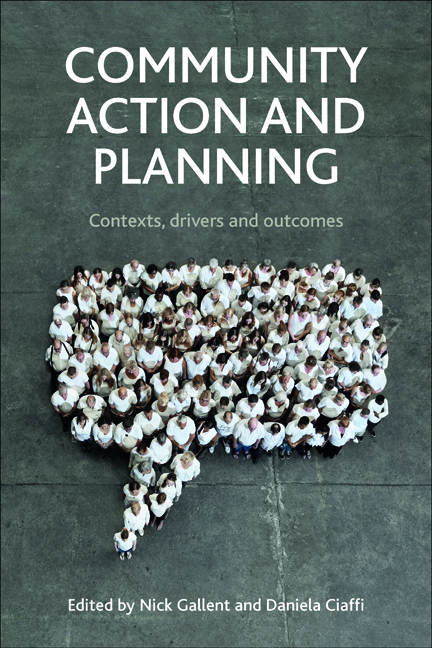9 - Small-town comprehensive planning in California: medial pathways to community-based participation
Published online by Cambridge University Press: 04 March 2022
Summary
Introduction
This chapter looks at the intersection of community groups and city-wide comprehensive planning in the context of small towns in California. City-wide, comprehensive planning in California is finely articulated by state law, which requires the adoption of a ‘general plan’ that provides the basis for virtually all governance related to planning undertaken by city governments. These comprehensive plans are required to reflect the vision that a city's residents have for the future of the city. All goals and policies included in a general plan must be implemented at the area or neighbourhood plan scale. Any regulations on private property must be consistent with the general plan, and all proposed projects in a city are reviewed for their compliance with it. Thus, the planning that community groups do, whether at a neighbourhood level, or on specific projects or issues, will at some point intersect with goals and policies in the general plan.
By virtue of its requirement to reflect the vision of city residents, and concomitant state regulations that specify cities provide for public input, the process of adopting a general plan or amending it is one in which community groups can participate. Some cities have devised processes that appear to engender meaningful participation; participation in which community members are partners and/or in control of the decision and plan-making process (Arnstein, 1969). Because of the general plan's relative importance to neighbourhood plans and projects, these processes seem a likely place for community groups to attempt to have influence. Despite this, very little has been written about the specific nature of community groups’ involvement in the US comprehensive planning process (Sirianni, 2007; Gonzalez, 2006). Indeed, the literature documenting community-based organising around planning issues in the US has focused on intersections with specific projects, both wanted and unwanted, and, to a lesser degree, neighbourhood-level plans. Moreover, literature on project-based participation frequently characterises it as originating from the top (agency-led participation) or bottom (grass-roots, community-based planning), which obscures a more complex understanding of how community groups might be, and are, involved in planning decisions (Cooke and Kothari, 2001; Fraser, 2005; Gonzalez, 2006).
- Type
- Chapter
- Information
- Community Action and PlanningContexts, Drivers and Outcomes, pp. 157 - 176Publisher: Bristol University PressPrint publication year: 2014



